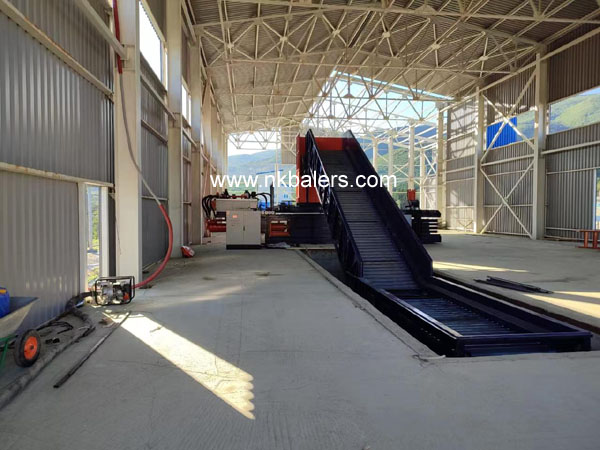Automatic Hydraulic Baler And Semi-Automatic Hydraulic Baler
Release time: 2024-07-02 sentiment:90 time
Here's a detailed comparison:
Automatic Hydraulic Baler:Fully Automated Process: An automatic hydraulic baler completes the entire baling process without the need for manual intervention.This includes feeding the material into the machine,compressing it,binding the bale,and ejecting it from the machine.High Efficiency: Since the process is fully automated,these machines can typically operate at higher speeds and with greater consistency than semi-automatic machines.Lower Labor Requirement: Fewer operators are needed to manage the baling process,reducing labor costs and the potential for human error.Higher Initial Cost: The advanced automation features of an automatic hydraulic baler generally result in a higher purchase price compared to semi-automatic machines.Complex Maintenance: More complex machinery often requires more sophisticated maintenance procedures,which might involve specialized skills and higher maintenance costs.Energy Consumption: Depending on the specific model and application,an automatic baler may consume more energy during operation due to the power required for automation.Ideal for High-Volume Operations: Automatic balers are best suited for facilities that handle large volumes of material that needs to be baled on a regular basis.

Semi-Automatic Hydraulic Baler:Partial Automation: A semi-automatic hydraulic baler requires some manual input from an operator,such as feeding material or initiating the baling cycle.However,the compression and sometimes the binding and ejection processes are automated.Moderate Efficiency: While not as fast as fully automatic machines,semi-automatic balers can still offer good efficiency and throughput,particularly for operations with varying levels of demand.Increased Labor Requirement: Operators are needed to manage certain aspects of the baling process,increasing the overall labor requirement compared to automatic machines.Lower Initial Cost: Generally less expensive than automatic machines due to fewer automation features,making them accessible to small and medium-sized operations.Simplified Maintenance: With fewer automated components,semi-automatic machines may be easier and less costly to maintain.Energy Consumption: May consume less energy than automatic machines since not all functions are powered automatically.Versatile Applications: Semi-automatic balers can be suitable for a wider range of applications,including smaller-scale or intermittent baling needs.
When choosing between an automatic and a semi-automatic hydraulic baler,factors such as budget,throughput requirements,material type,and available labor should be considered.Fully automatic machines are best for high-volume,standardized operations where consistency and speed are crucial.Semi-automatic machines provide a balance of automation and manual control,offering flexibility for various operational scales and types of materials.

